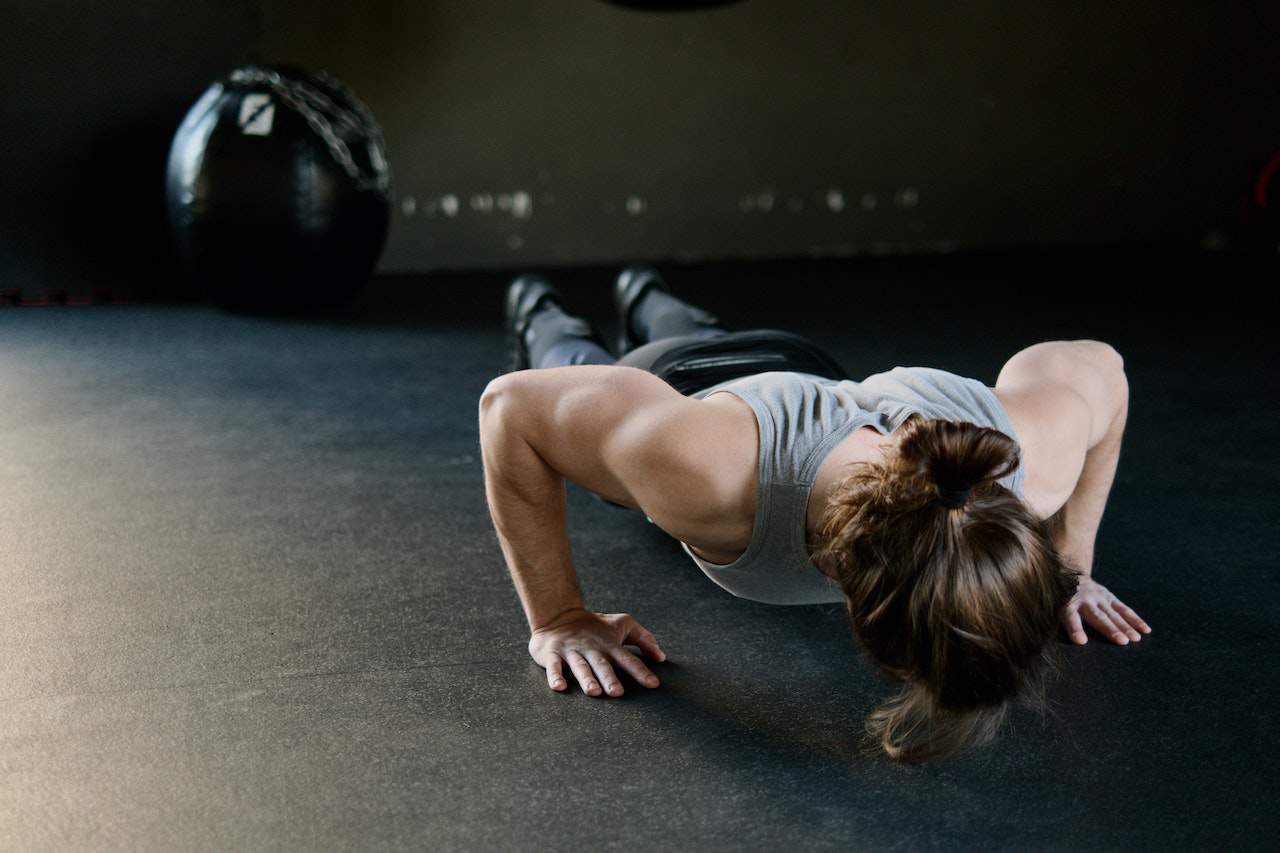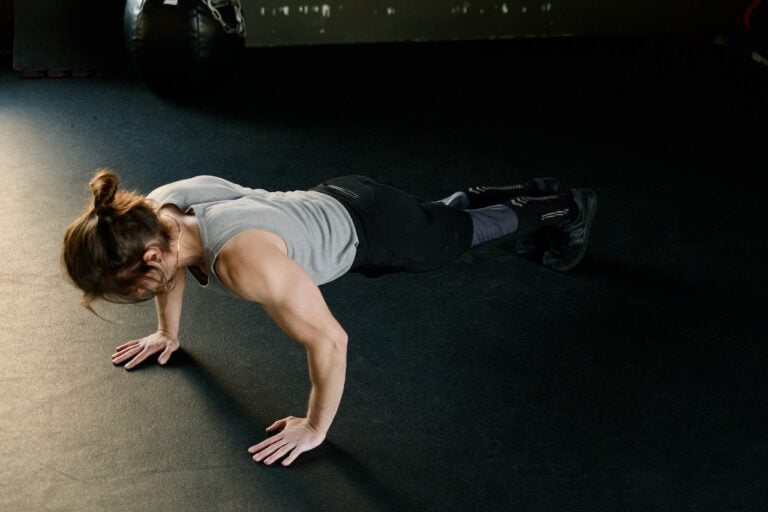The Ultimate Guide to Calisthenics Compound Exercises
Calisthenics has become a popular workout program that focuses on bodyweight training and minimal equipment needed. Calisthenics Compound Exercises are one of its many offers that stands out for those wishing to efficiently build a muscular, well-balanced physique. These simple bodyweight exercises offer a unique blend of strength training and functional mobility.
In this article, we’ll explore the various types of compound exercises used in calisthenics and find the core concepts, advantages, and routines that will help you reach your physical potential. Join us on the journey to see how these exercises may improve your fitness routine, whether you’re an experienced calisthenics athlete looking for a transforming workout program or a beginner just starting.
What Are Calisthenics Compound Exercises?
Calisthenics, also known as “bodyweight training,” includes performing exercises with your own body as the primary source of resistance. On the contrary, compound workouts work for several muscular groups simultaneously, like push-ups, it not only targets the chest but also shoulders and triceps and pull up exercise which target the back, biceps, lats and core simultaneously. These two ideas work together to create calisthenics compound exercises, where you use your body weight to perform complex movements that work for multiple muscle groups together.
Certainly! Here are some common calisthenics compound exercises:

Certainly! Here are some common calisthenics compound exercises:
- Push-Ups:
- Primary Muscle Groups: Chest (pectoralis major), shoulders (anterior deltoids), triceps.
- Secondary Muscle Groups: Core, upper back.
- Pull-Ups/Chin-Ups:
- Primary Muscle Groups: Back (latissimus dorsi), biceps, shoulders (posterior deltoids).
- Secondary Muscle Groups: Forearms, core.
- Dips:
- Primary Muscle Groups: Triceps, chest (pectoralis major), shoulders (anterior deltoids).
- Secondary Muscle Groups: Core, shoulders (lateral deltoids).
- Burpees:
- Primary Muscle Groups: Full body exercise engaging legs, chest, shoulders, triceps, core.
- Secondary Muscle Groups: Cardiovascular system.
- Squats:
- Primary Muscle Groups: Quadriceps, hamstrings, glutes, lower back.
- Secondary Muscle Groups: Core.
- Lunges:
- Primary Muscle Groups: Quadriceps, hamstrings, glutes, calves.
- Secondary Muscle Groups: Core.
- Planks:
- Primary Muscle Groups: Core (abdominals), shoulders, back (erector spine).
- Secondary Muscle Groups: Chest, hip flexors.
- Bridges:
- Primary Muscle Groups: Glutes (buttocks), lower back, hamstrings.
- Secondary Muscle Groups: Core.
- Mountain Climbers:
- Primary Muscle Groups: Core (abdominals), shoulders, chest, legs.
- Secondary Muscle Groups: Cardiovascular system.
- Handstand Push-Ups:
- Primary Muscle Groups: Shoulders (deltoids), triceps.
- Secondary Muscle Groups: Core, upper chest.
- Muscle-Ups:
- Primary Muscle Groups: Back (latissimus dorsi), biceps, triceps, chest.
- Secondary Muscle Groups: Shoulders, forearms, core.
- Pike Push-Ups:
- Primary Muscle Groups: Shoulders (deltoids), triceps.
- Secondary Muscle Groups: Core, upper chest.
- Hanging Leg Raises:
- Primary Muscle Groups: Core (abdominals), hip flexors.
- Secondary Muscle Groups: Forearms, grip strength.
- Push-Up Variations (e.g., Diamond push-ups, wide grip push-ups):
- Primary Muscle Groups: Varies based on the specific push-up variation, but generally chest, shoulders, and triceps.
- Squat Jumps:
- Primary Muscle Groups: Quadriceps, hamstrings, glutes, calves.
- Secondary Muscle Groups: Core.

Benefits of Calisthenics Compound Exercises
1. Efficient Full-Body Workouts:
Compound exercises engage multiple muscle groups simultaneously, allowing you to work on various parts of your body in a single exercise. This efficiency means you can achieve a comprehensive full-body workout without the need for a lot of different exercises.
2. Strength Development:
Compound exercises are excellent for building overall strength. They target both primary and secondary muscle groups, helping you develop functional strength that translates to everyday activities.
3. Muscle Building:
Because compound exercises work multiple muscles, they are effective for muscle hypertrophy (growth). This makes them a key component of any muscle-building or body recomposition program.
4. Increased Caloric Burn:
Compound exercises require more energy and engage a larger number of muscles, leading to a higher calorie burn during and after the workout. This can be beneficial for those aiming to lose weight or maintain a healthy body composition.
5. Enhanced Core Stability:
Many compound exercises engage the core muscles to stabilize the body. This not only strengthens the core but also improves posture and reduces the risk of lower back pain.
6. Improved Balance and Coordination:
Balancing and coordinating your body during compound exercises improve your overall balance and coordination. This is particularly valuable as you age to prevent falls and maintain agility.
7. Minimal Equipment:
Calisthenics compound exercises primarily use your body weight, which means you can perform them virtually anywhere without the need for specialized equipment or a gym membership.
8. Progression and Adaptation:
Compound exercises offer various progressions and variations, making them suitable for individuals of different fitness levels. You can start with the basics and gradually advance to more challenging variations as you become stronger.
9. Time-Efficient:
Calisthenics compound exercises can be time-efficient since you can complete a full-body workout in a relatively short amount of time, making them a great option for busy individuals.
10. Mental Benefits:
The challenge of mastering compound exercises can provide mental benefits such as increased confidence, discipline, and mental toughness.
Incorporating Calisthenics Compound Exercises into Your Routine
Bodyweight compound exercises offer an exceptional path to building strength, endurance, and a sculpted physique using just your body weight. To successfully integrate them into your fitness routine, it’s crucial to design a well-structured workout plan and understand progression strategies. In this section, we will explore the key elements of incorporating calisthenics compound exercises into your routine, providing guidance on frequency, volume, progression, and sample workout routines tailored to different fitness levels.

A. Designing a Calisthenics Workout Plan
Frequency: Determine how often you’ll perform calisthenics workouts. Beginners may start with three sessions per week and gradually increase frequency as they progress. More advanced practitioners might train four to six times weekly. Rest days are essential for recovery.
Volume: Volume refers to the number of sets and repetitions in each workout. For beginners, 2-4 sets of 8-12 repetitions per exercise is a good starting point. As you advance, you can increase the sets and repetitions or explore advanced techniques like drop sets or pyramid training.
Progression:
- Increasing Intensity: Gradually make exercises harder by changing leverage, adding variations, or trying more advanced moves. For example, progress from standard push-ups to diamond push-ups or from regular pull-ups to muscle-ups.
- Adding Resistance: Invest in resistance bands or weighted vests to increase resistance for exercises like squats or dips. This will stimulate muscle growth and strength.
- Adjusting Rest Periods: Manipulate rest periods between sets. Decrease rest for greater intensity or increase it for endurance-focused workouts.
B. Sample Workouts
Beginner Calisthenics Compound Exercise Workout:
Warm-up: 5-10 minutes of light cardio (e.g., jogging or jumping jacks) followed by dynamic stretches (e.g., leg swings and arm circles).
Workout:
- Push-Ups: 3 sets of 10 repetitions (focus on proper form).
- Bodyweight Squats: 3 sets of 12 repetitions (maintain proper squat technique).
- Inverted Rows: 3 sets of 8 repetitions (use a sturdy horizontal bar or suspension trainer).
- Planks: 3 sets of 30 seconds to 1 minute (engage your core and maintain a straight line from head to heels).
- Glute Bridges: 3 sets of 12 repetitions (squeeze your glutes at the top of the movement).
Cool-down: 5-10 minutes of static stretching, targeting major muscle groups like the chest, legs, and back.
Intermediate/Advanced Calisthenics Compound Exercise Workout:
Warm-up: 5-10 minutes of light cardio followed by dynamic stretches.
Workout:
- Pull-Ups: 4 sets of 8 repetitions (add weight if necessary for extra challenge).
- Pike Push-Ups: 4 sets of 10 repetitions (elevate your feet on a surface to increase difficulty).
- Pistol Squats: 4 sets of 6 repetitions per leg (start with assistance if needed).
- Front Lever Progressions: 3 sets of 15 seconds (work on tuck front lever or advanced progressions).
- Muscle-Ups: 4 sets of 6 repetitions (aim for strict form).
- L-Sit Holds: 3 sets of 20 seconds (on parallel bars or on the floor).
Cool-down: 10-15 minutes of static stretching and mobility exercises, focusing on areas that feel tight or worked during the workout.
The Importance of Proper Form
Maintaining proper form during bodyweight compound exercises is crucial for two main reasons: injury prevention and maximizing results. Poor form can lead to injuries and limit the effectiveness of your workouts. Pay attention to your technique and follow these tips for maintaining form.
1. Educate Yourself:
Learn the correct form for each exercise you plan to incorporate into your routine. Utilize instructional videos, and tutorials, or consult with a qualified trainer if possible.
2. Start with the Basics:
Master the fundamental movements before progressing to advanced variations. Building a strong foundation in proper form is essential for success.
3. Focus on Breathing:
Proper breathing is crucial for stability and power. Generally, exhale during the exertion phase of an exercise and inhale during the relaxation phase. Consistent, controlled breathing helps maintain form.
4. Use Mirrors and Self-Feedback:
Perform exercises in front of a mirror whenever possible. This allows you to visually assess your form and make necessary adjustments. Alternatively, record your workouts and review the footage for form analysis.
5. Maintain a Neutral Spine:
Keep your spine in a neutral position during exercises. Avoid excessive arching or rounding of the back, which can lead to back pain and injuries. Engage your core to support your spine.
6. Use Proper Grip:
Ensure you have a secure and comfortable grip when performing exercises like pull-ups, push-ups, or dips. An improper grip can lead to wrist, hand, or shoulder discomfort.
7. Rest and Recovery:
Give your body adequate rest between sets and workouts. Fatigue can lead to poor form, so allow sufficient time for recovery.
8. Control the Movement:
Avoid using momentum or jerky movements. Perform exercises in a controlled manner, emphasizing the eccentric (lowering) and concentric (lifting) phases equally.
9. Mind-Muscle Connection:
Concentrate on the muscle groups you’re targeting. Visualize the muscles working and focus on contracting them during each repetition.
10. Engage the Core:
Activate your core muscles throughout compound exercises to stabilize your torso. A strong core helps maintain proper alignment and prevents excessive strain on your lower back.
Nutritional Considerations
Any calisthenics or fitness plan will be more successful if nutritional concerns are taken into account. Your body needs fuel to function properly, which also promotes muscular growth, speeds up recovery, and improves overall performance. A macronutrient-rich, well-balanced diet that includes healthy fats, carbs, and proteins is crucial. Proteins help with muscle growth and repair while carbohydrates give you the energy you need for exercise. Healthy fats can be a significant energy source and promote overall wellness. A diet rich in micronutrients, such as vitamins and minerals, also supports the demands of a tough calisthenics training program and aids in maintaining healthy bodily functions.
Hydration is essential in addition to macronutrients and micronutrients. During workouts, being properly hydrated is crucial for maintaining healthy joints, muscles, and body temperature. Nutritional support before and after exercise is also essential. The energy required for peak performance can be provided by a well-balanced pre-workout meal or snack, and a post-workout diet promotes recovery by refilling glycogen stores and mending muscle tissue. The best way to ensure that your body is prepared to thrive in your training and achieve your fitness goals is to customize your nutrition to your unique calisthenics goals, whether they be boosting endurance, reducing fat, or developing muscle.
Tracking Progress
Tracking progress in calisthenics is essential for achieving fitness goals. To do this effectively:
- Set Clear Goals: Define specific, measurable objectives.
- Workout Journal: Record workouts, including exercises, sets, reps, and progressions.
- Performance Metrics: Track metrics like reps, time, or strength gains.
- Photographic Evidence: Use photos or videos to visualize changes.
- Body Measurements: Measure body composition regularly.
- Fitness Tests: Incorporate tests to assess performance objectively.
- Tracking Apps: Use fitness apps or devices for real-time data.
- Celebrate Milestones: Acknowledge achievements to stay motivated.
- Regular Assessments: Periodic reviews help adjust your plan.
- Seek Feedback: Get input from experienced trainers or peers.
Common Mistakes to Avoid
In calisthenics, as with any form of fitness training, avoiding common mistakes is essential for safety, effectiveness, and progress. Here are some common mistakes to steer clear of:
- Skipping Warm-Ups and Cool-Downs: Failing to warm up properly can increase the risk of injury, and neglecting a cool-down can lead to muscle soreness. Always allocate time for both.
- Ego Lifting: Trying to lift more weight or perform advanced exercises before you’re ready can lead to injuries. Focus on your own progress and what’s safe and effective for you.
- Neglecting Proper Form: Incorrect forms can lead to injuries and hinder progress. Focus on maintaining proper technique, even if it means starting with lower repetitions or lighter progressions.
- Overtraining: Excessive training without sufficient rest can lead to burnout, overuse injuries, and plateaus. Give your body time to recover and adapt between workouts.
- Impatience: Building strength and mastering advanced exercises takes time. Don’t rush through progressions; aim for gradual, sustainable improvements.
- Inconsistent Training: Consistency is key in calisthenics. Irregular workouts can lead to slow progress and decreased motivation.
Conclusion
Calisthenics or bodyweight compound exercises offer a versatile and effective path to achieving your fitness goals. By harnessing the power of your body weight, you can build strength, improve functionality, and enjoy the convenience of a workout regimen that requires minimal equipment. Embrace the world of calisthenics and experience the incredible benefits these bodyweight compound exercises have to offer. Start your journey to a stronger, fitter you today.







